In the first leg of the semi-finals of the UEFA Champions League, Tottenham Hotspur hosted the Dutch side of Ajax Amsterdam. Spurs had previously eliminated Pep Guardiola’s Manchester City, while the young Ajax team knocked out Real Madrid and Juventus out of this competition. Naturally, both teams are vying for a place in the final in Madrid. However, thanks to a 1-0 victory in this game, Ajax are now in an advantageous for the second leg. This tactical analysis will explain the reasons for Ajax’ great victory over Tottenham.
Line-Ups
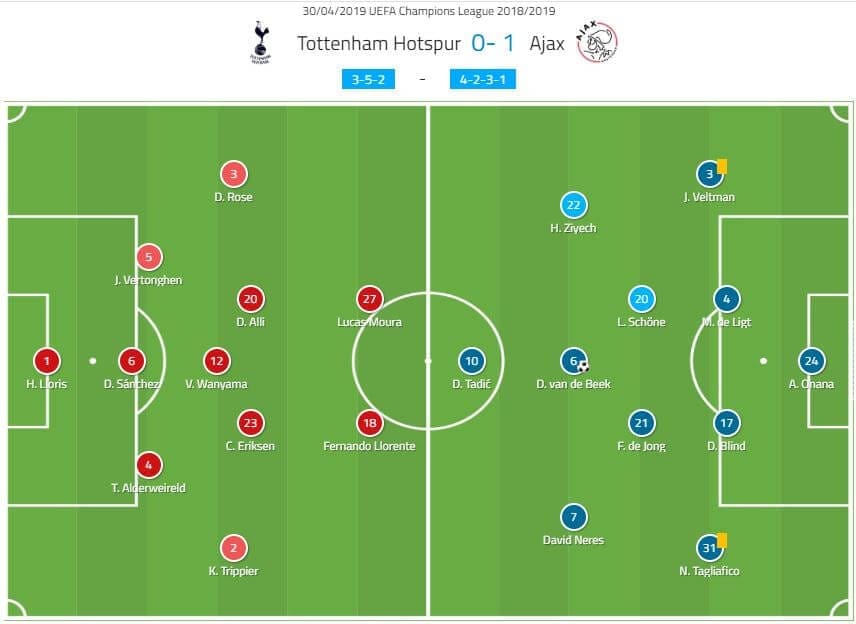
With Harry Kane and Heung Min Son missing, Mauricio Pochettino decided to use a 3-5-2 formation with Lucas Moura and Fernando Llorente up-front. After the game, Pochettino said he got his tactics wrong. We will elaborate on the reasons later on.
Ajax coach Erik ten Haag started with a 4-2-3-1 formation, which has succeeded throughout the season. Joël Veltman played at right-back instead of Noussair Mazraoui meant more stability instead of attacking power.
Tottenham with no access in the centre
Ajax began the game proactively and were the dominant side in the first half. At some point, they had up to 70% possession. One reason for that was Tottenham‘s difficulties in accessing the central areas.
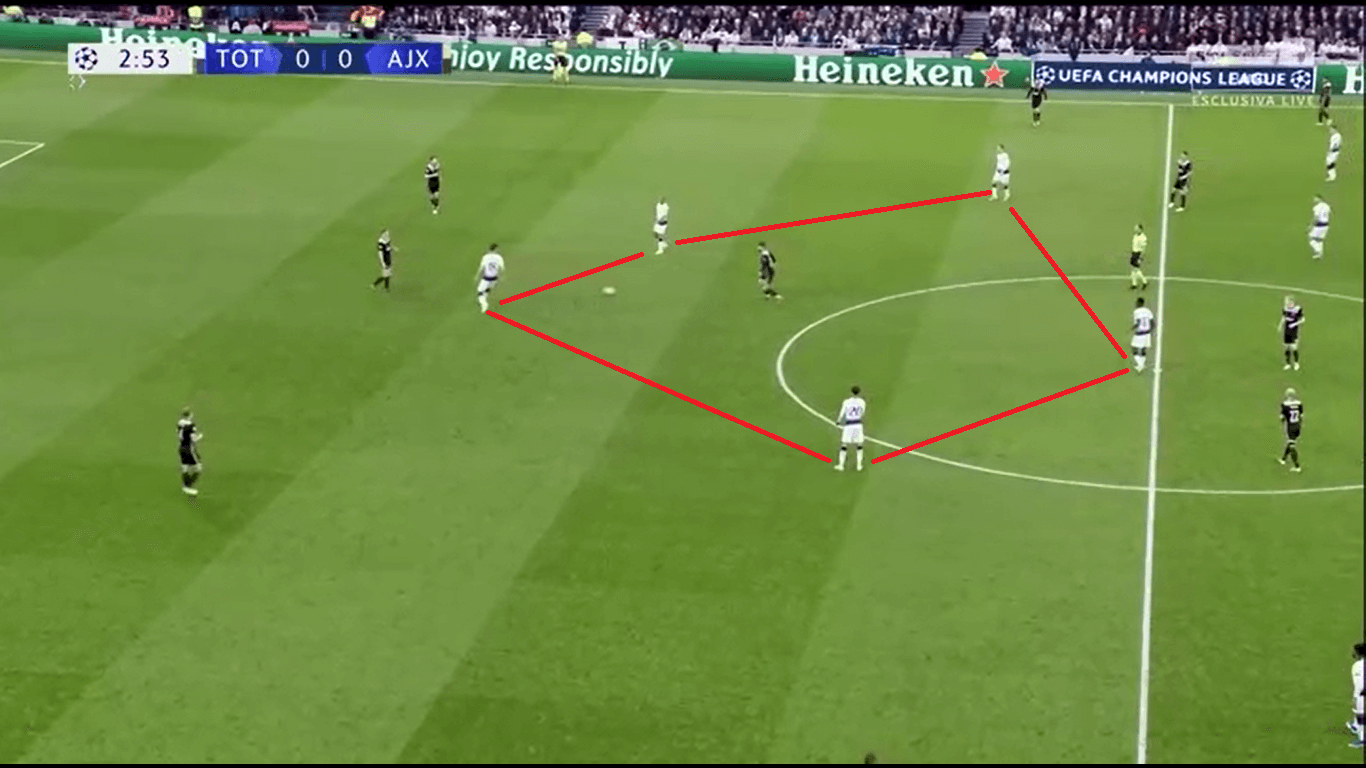
Even though Tottenham’s defence is positioned rather high, we see that they can’t close the space in the centre. Dele Alli and Christian Eriksen are in the half-space but are unable to press Lasse Schöne. Llorente and Lucas aren’t able to close the passing lane either, as Frenkie de Jong dropped between the centre-backs to provide numerical superiority in the first build-up line. Moreover, after Schöne receives the ball, he can easily turn and has a lot of passing options.
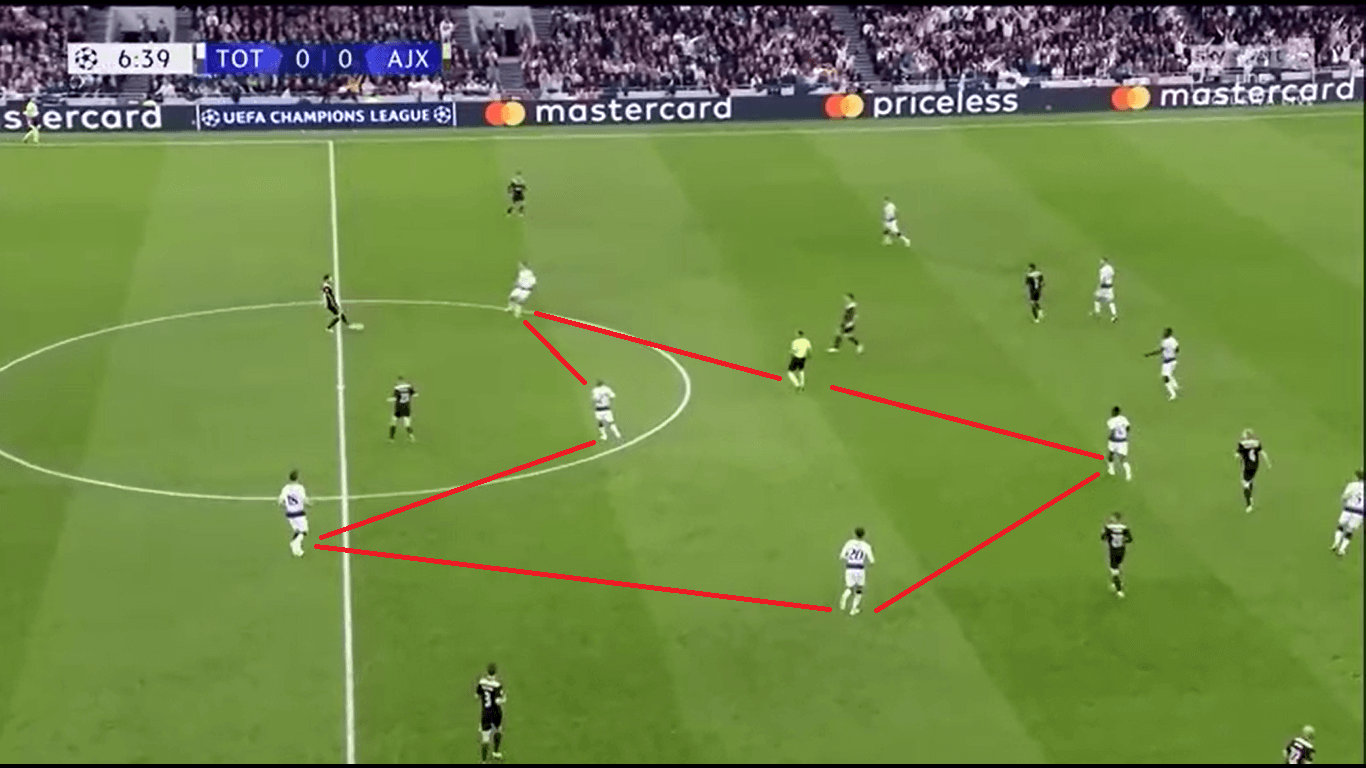
Similarly, Tottenham suffer from the same problem in this situation. Once again the central area is wide open and the defenders have no access. Eriksen moves out to oppose Daley Blind, but he is too slow. Also, he isn’t able to use his cover shadow to prevent the pass into the centre, because then the pass to left-back Nicolás Tagliafico would be played, who could attack through David Neres down the wing.
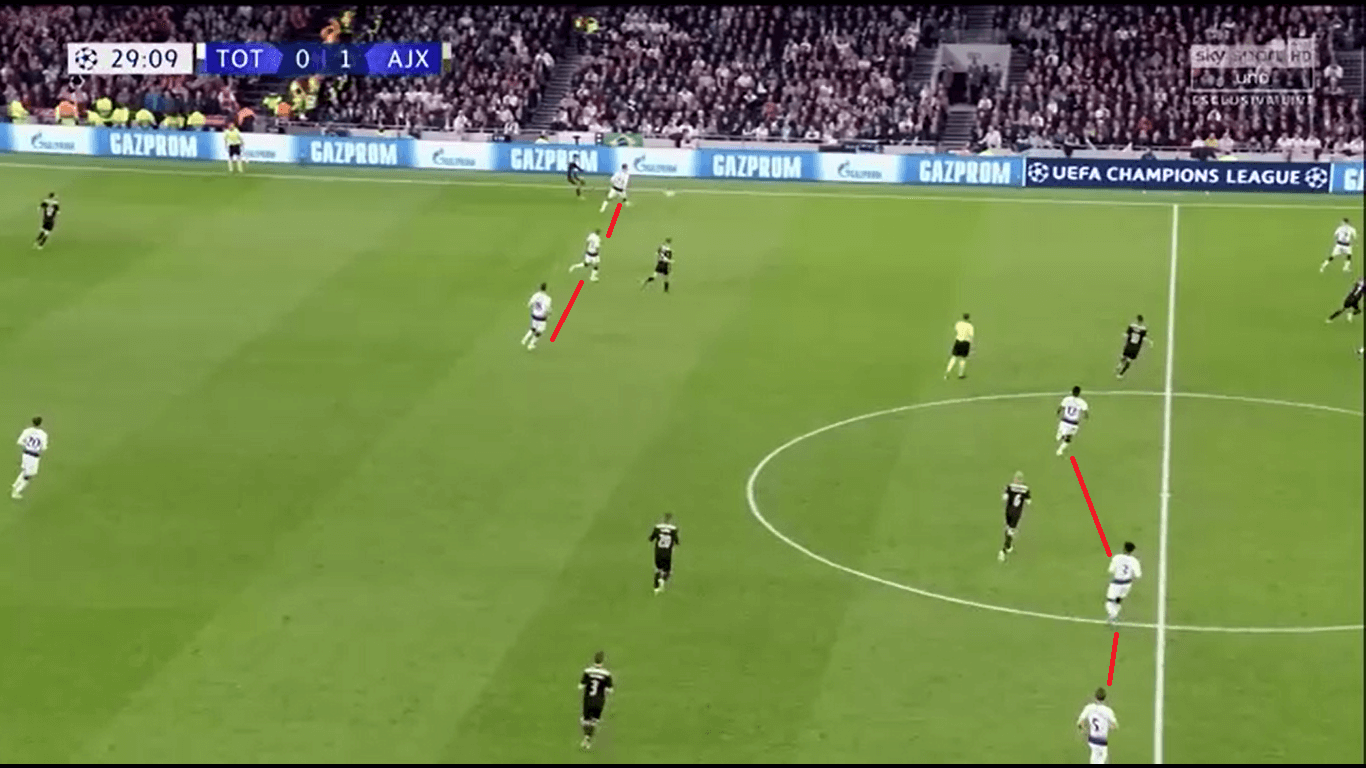
Apart from that, Tottenham were oddly positioned from time to time. Here is an example of Tottenham defending with no staggering in two defensive lines. Also, there is a lot of horizontal compactness, as the second line hasn’t shifted at all to the ball-near wing. Thus, Ajax can easily maintain possession.
Ajax scored thanks to those weaknesses
In fact, this had a huge impact on the outcome of the game. The only goal of this match resulted from a situation in which these problems were rather obvious.

David Neres is in possession, while Dušan Tadić, Donny van de Beek and Hakim Ziyech are inside the box or on the edge of it. Schöne and Veltman are outside the box in a dangerous area. Tottenham’s back five is on one line with right-back Kieran Trippier out on the wing. Dele Alli and Victor Wanyama also help out in the box, but no one seems to care for the space just outside of it.
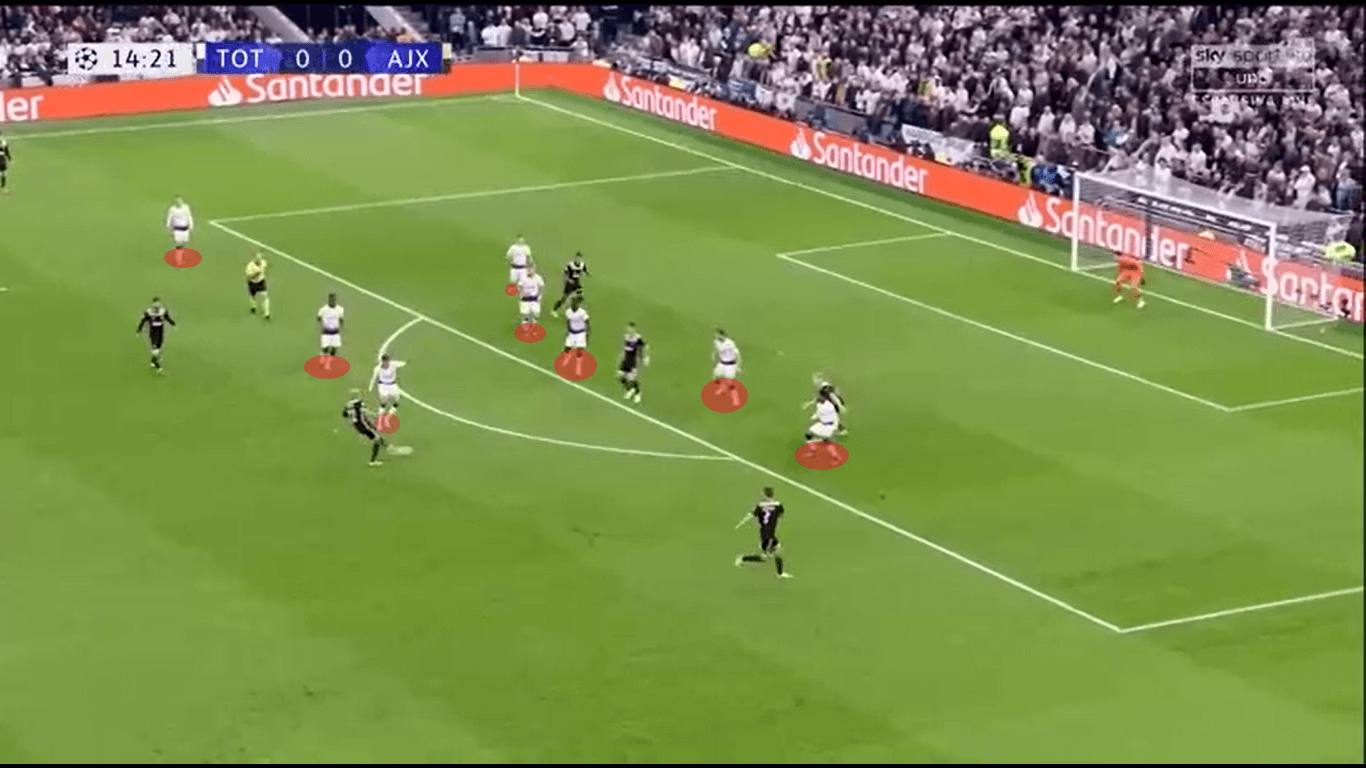
A few seconds later, we see that Ziyech fell a few meters back into that open space. Alli and Wanyama are too late to pressure him and Ziyech is able to play the ball into the box. With one pass, the back five is out of play, as van de Beek receives the ball. Notice that Tottenham is now positioned completely in the centre, while the wings are empty. Nonetheless, having no access in a crucial area leads to Ziyech playing a great key pass.
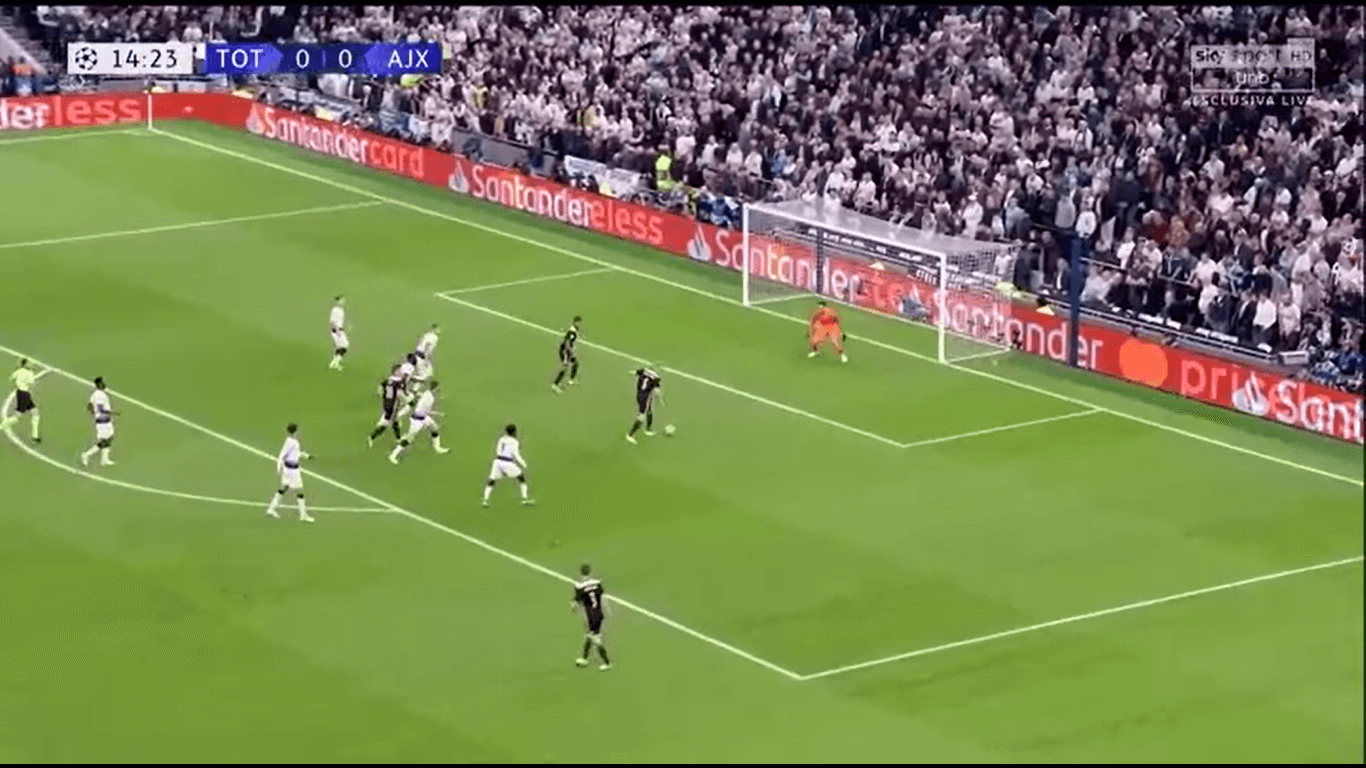
The rest is then an easy task for van de Beek, who has a one-on-one situation against Hugo Lloris.
Stable possession game helps Ajax controlling the game
Besides these weaknesses from Tottenham, we could also observe that Ajax wanted to control the game with a stable possession game. They would stay calm and move the ball and the opponent, instead of rushing things and attacking aggressively.
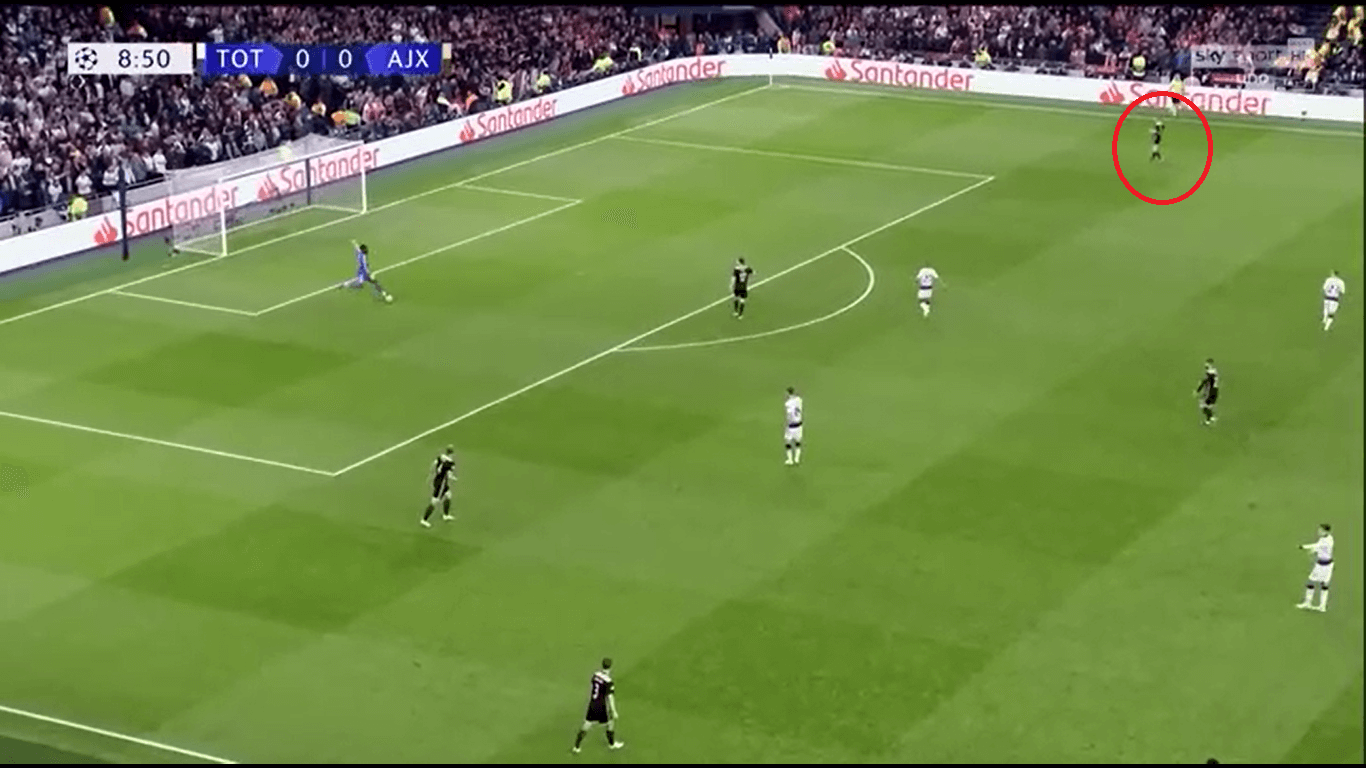
An example of this would be the full-backs staying deeper than usual. Instead of staying high and bombing through the wing, they would offer passing options in the build-up. Since Tottenham didn’t play with classical wingers, it was difficult for them to put pressure there. Either their own full-backs or the central midfielders needed to move out in order to do so. Looking at the position of Tagliafico in this image, we can imagine that it was just not possible for Tottenham’s right back Trippier to defend near the opponent’s box.
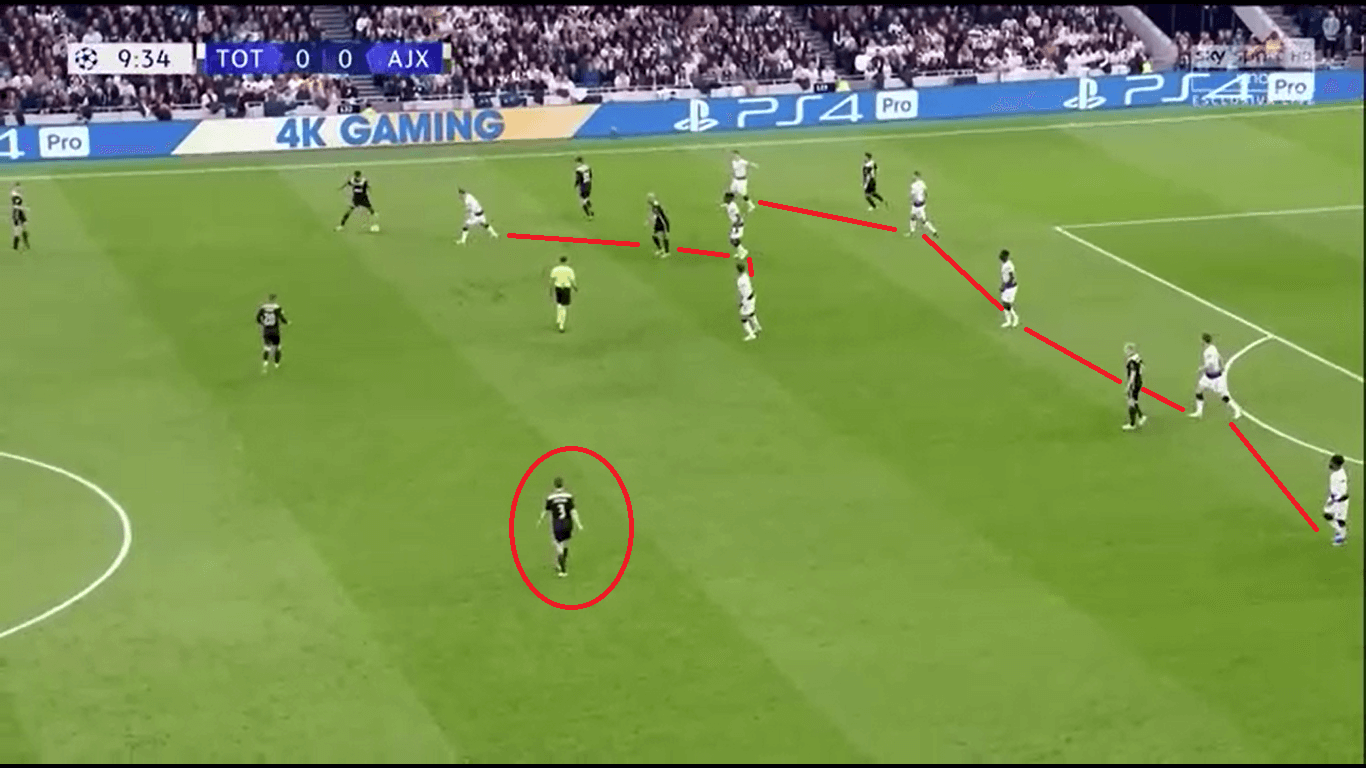
Another tactical idea was the use of right back Veltman as a false full-back. We have seen this also in the build-up of the goal. Occasionally, Veltman would move into the centre to provide an additional passing option. Also, this was a measure to prevent counter attacks through the centre with one additional central player.
Nonetheless, we also saw a lot of fluidity in the final third. Especially van de Beek and Tadić who were constantly changing positions, as Tadić would fall back like a false nine and van de Beek would start a run into the opened space. One example can be seen below.
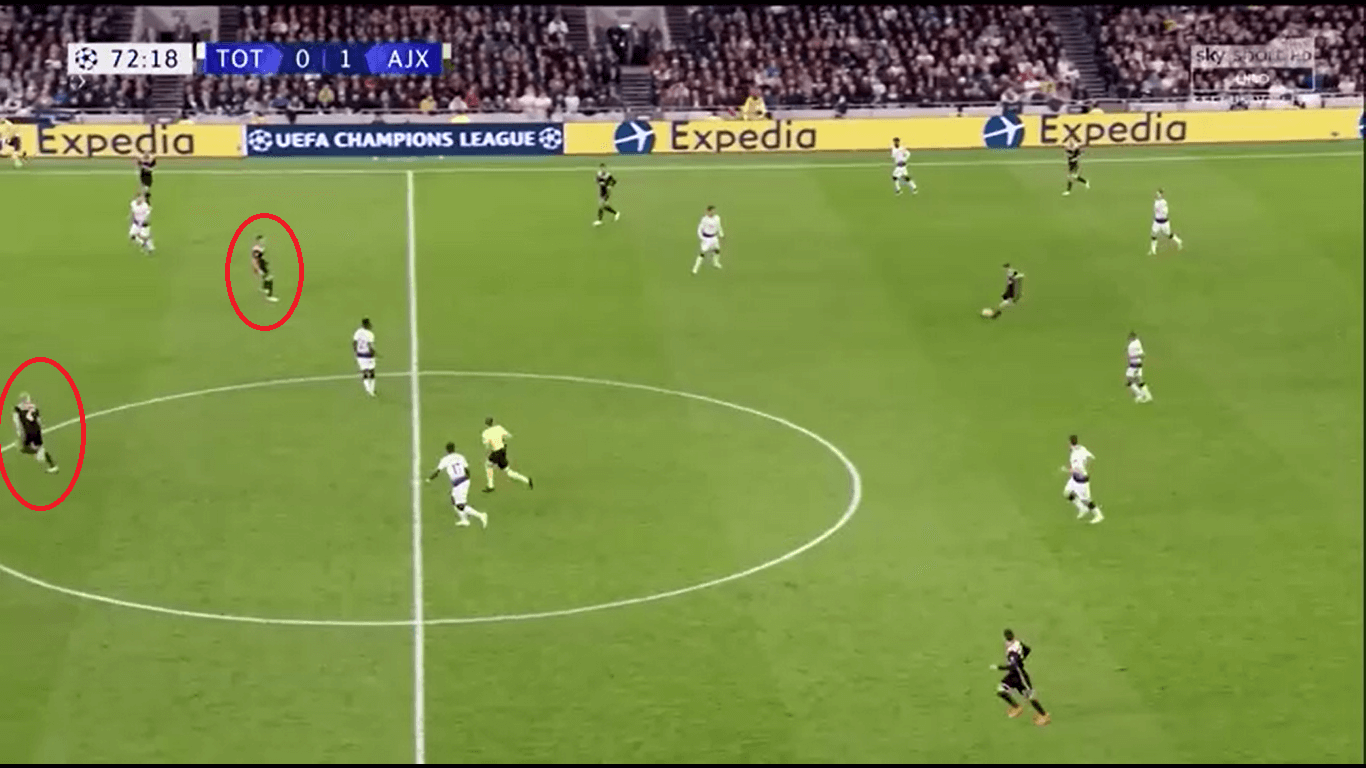
Great pressing game by Ajax
Alongside their great possession game, Ajax’ pressing game was great this season. Especially for the gegenpress, the idea with Veltman was helpful in this game.
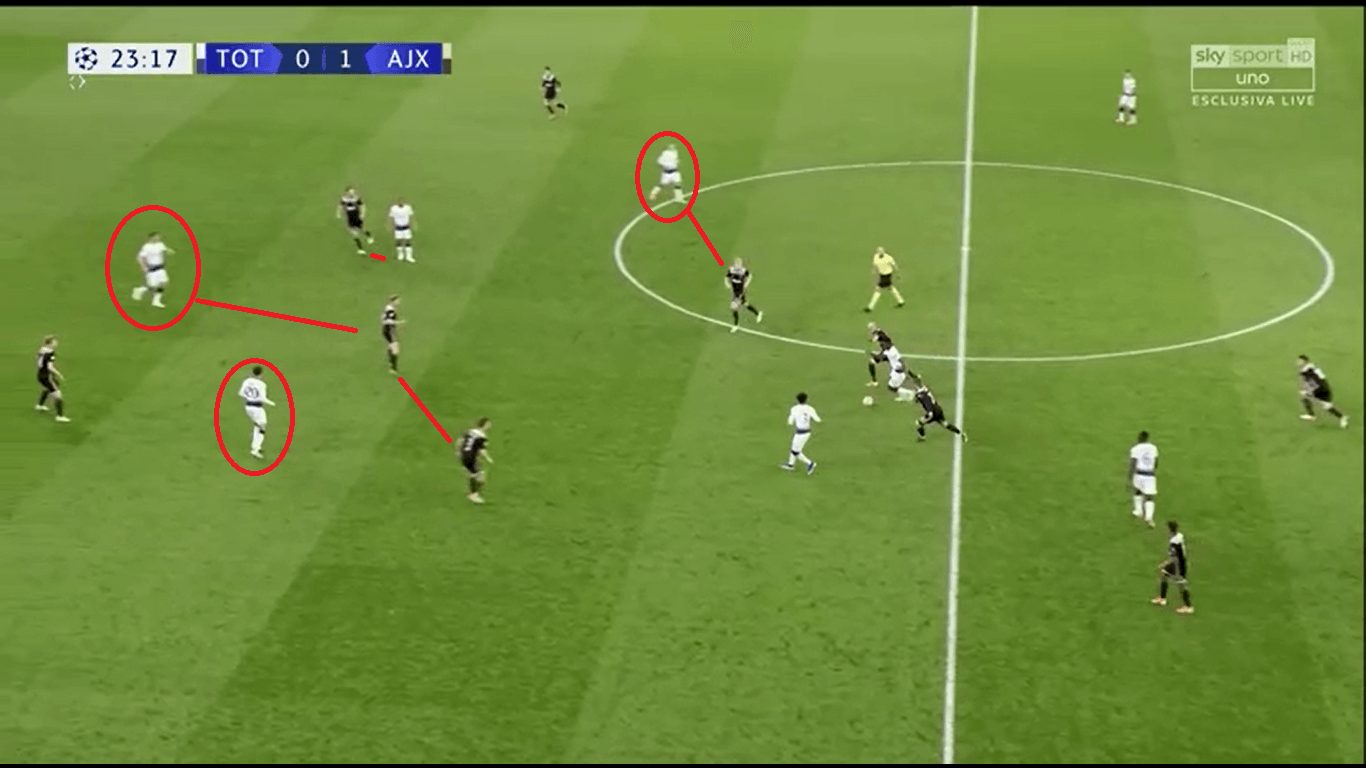
Here, we have an example of Ajax doing this brilliantly. They lost the ball but put immediate pressure onto it. All passing options are closed and ultimately, they win the ball back immediately.
In many other situations, they relied on a strict man-to-man approach with a lot of intensity.
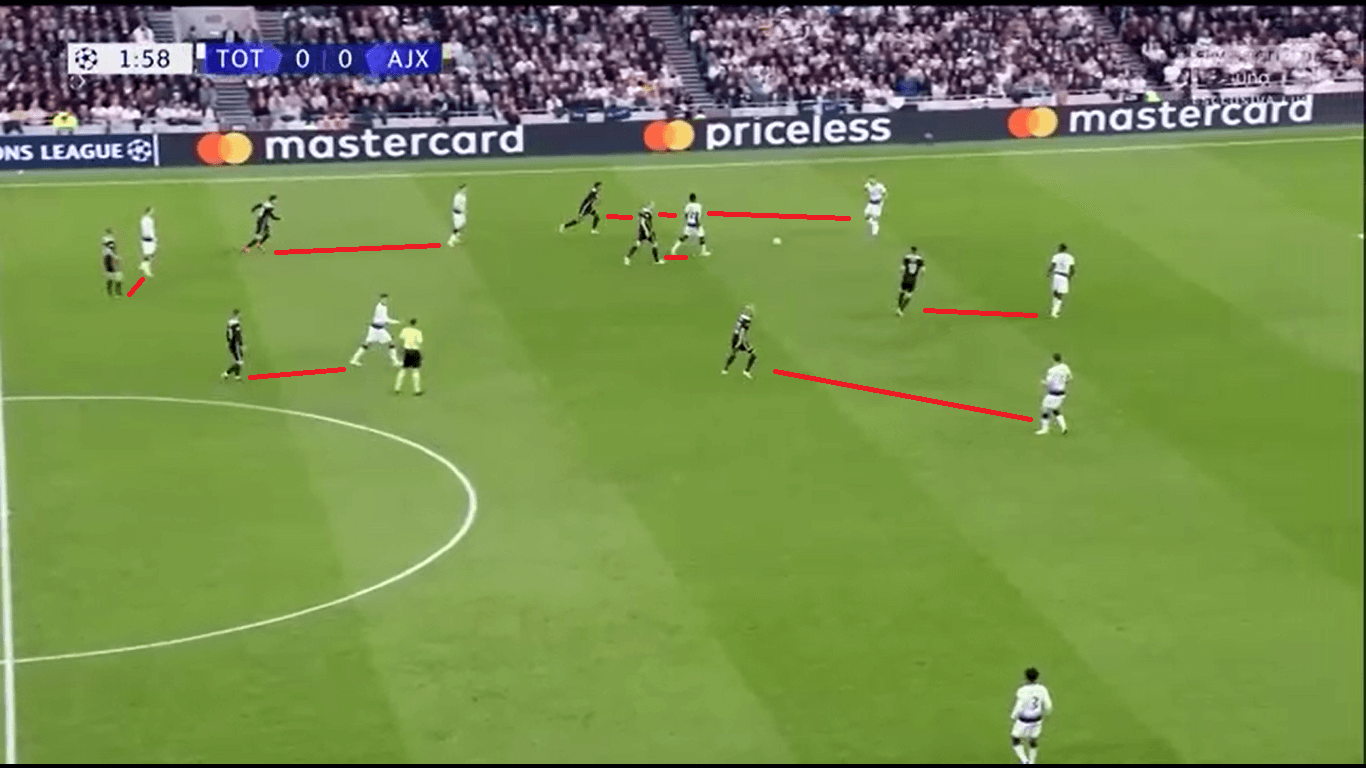
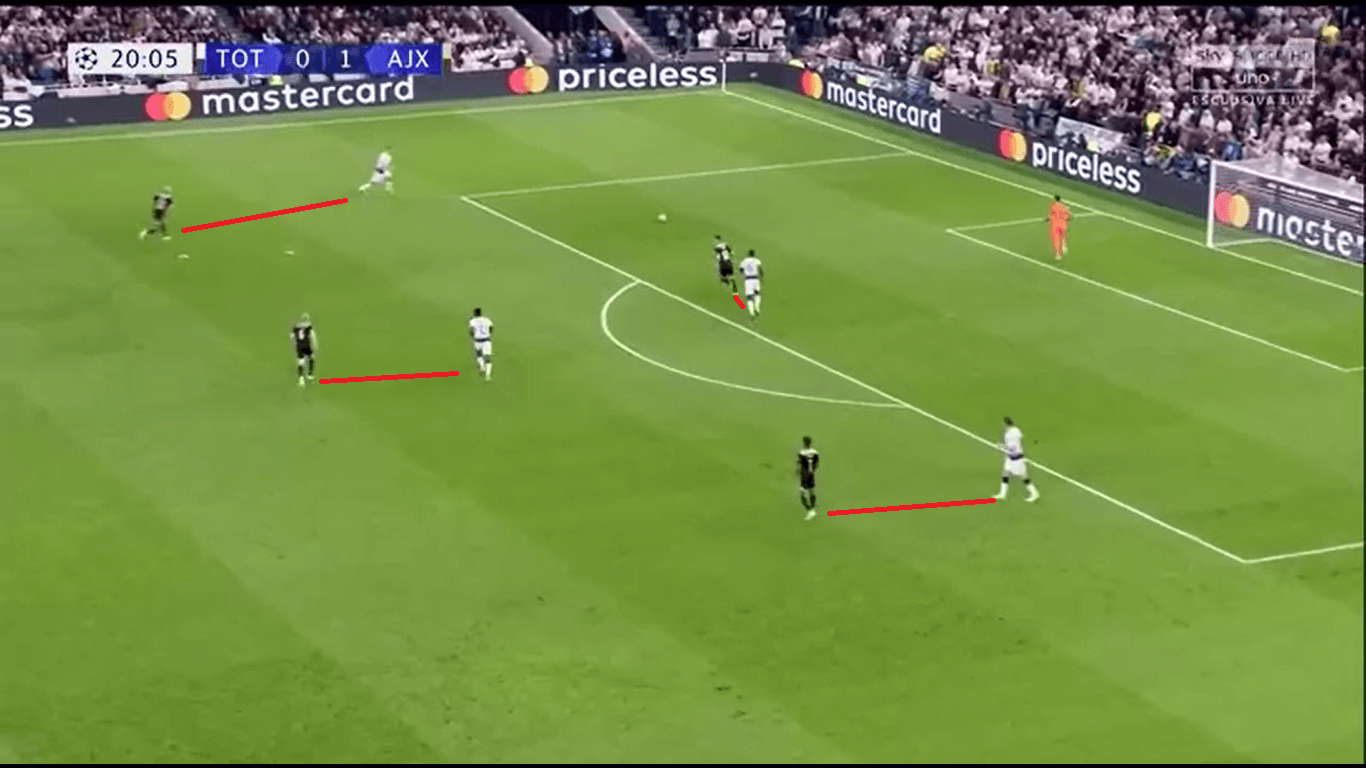
In both these cases, we see that there is no passing option for Tottenham. The player with the ball is forced into a bad body positioning, where it becomes difficult to play a controlled pass further up the pitch. Instead, the only option is to play the ball back to the Goalkeeper, who then has to kick it long.
Vertonghen’s injury leads to a formation change for Tottenham
A horrible situation close to the end of the first half resulted in a forced substitution for Tottenham, as centre-back Jan Vertonghen had to leave the pitch. Pochettino then changed the formation and decided to bring midfielder Moussa Sissoko into the game. Tottenham would then play with a 4-4-2 with a diamond-shaped midfield. Interestingly, this solved a lot of their problems and resulted in Tottenham being the better side in the second half.
On the one hand, they had better access in the central areas. After the substitution, the central area around the halfway line was extremely crowded and a lot of duels occurred. Besides, Tottenham’s stability in the possession game improved.
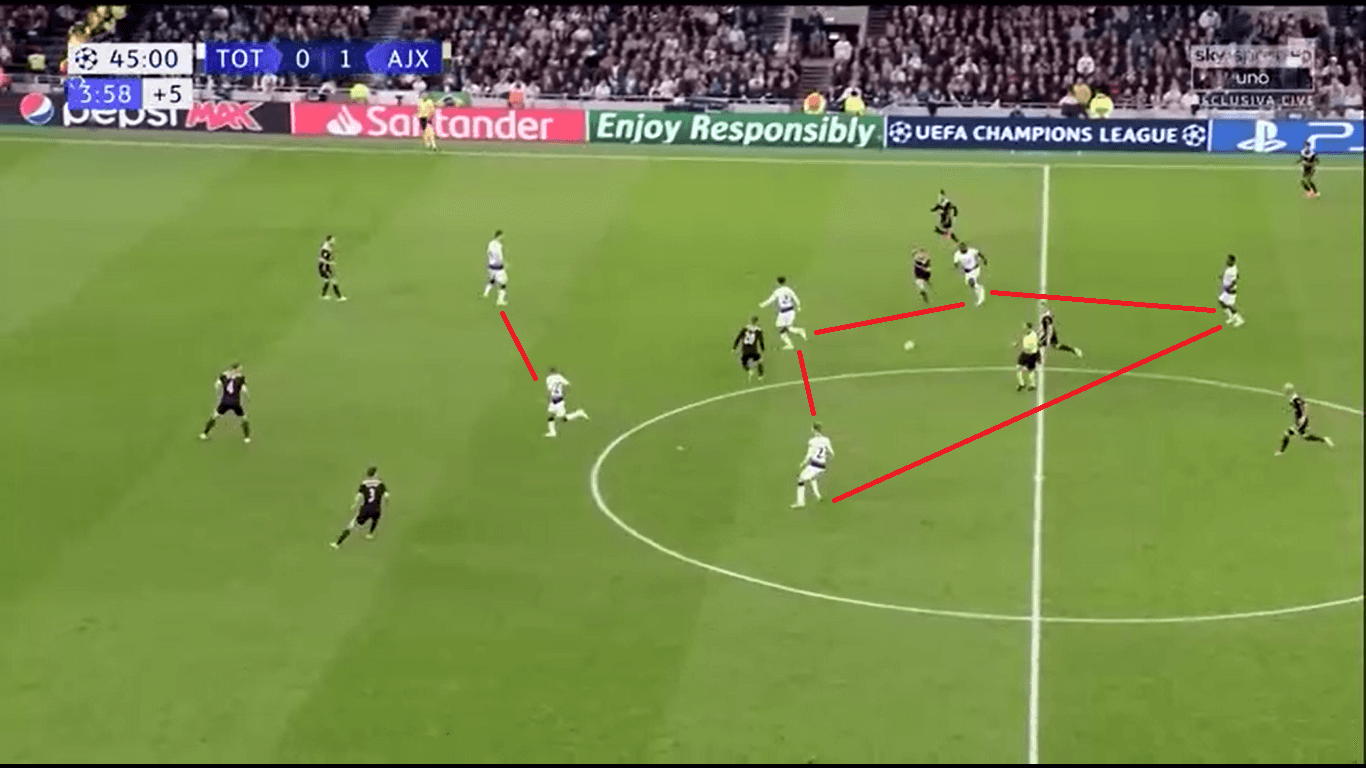
Here, Sissoko has the ball in the right half space and plays the ball to Eriksen in the centre. We see that the diamond shape provides passing options and passing angles.
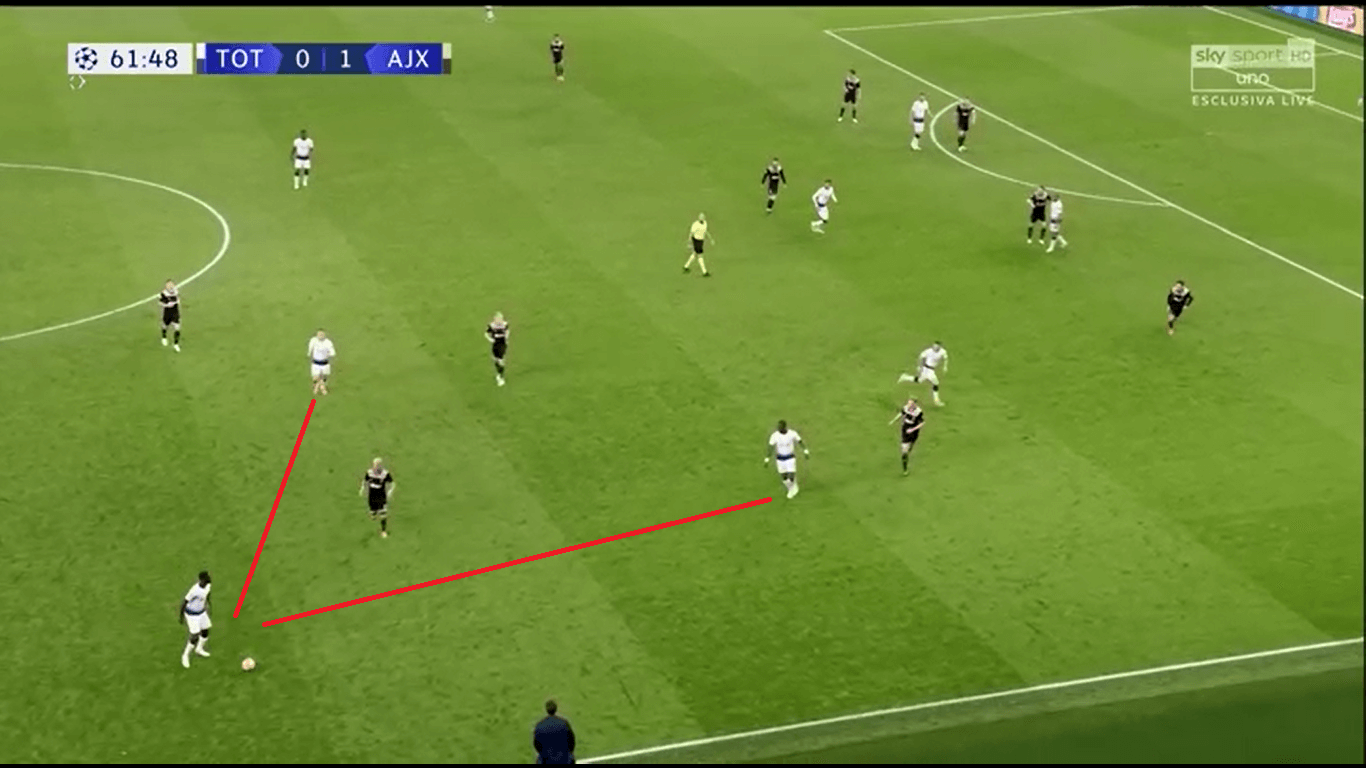
A similar example can be seen in this image. Ajax still try to pressure aggressively, but the additional midfielder makes it difficult for them. Still, the positioning isn’t optimal by Tottenham, as Trippier needs to be out on the wing.
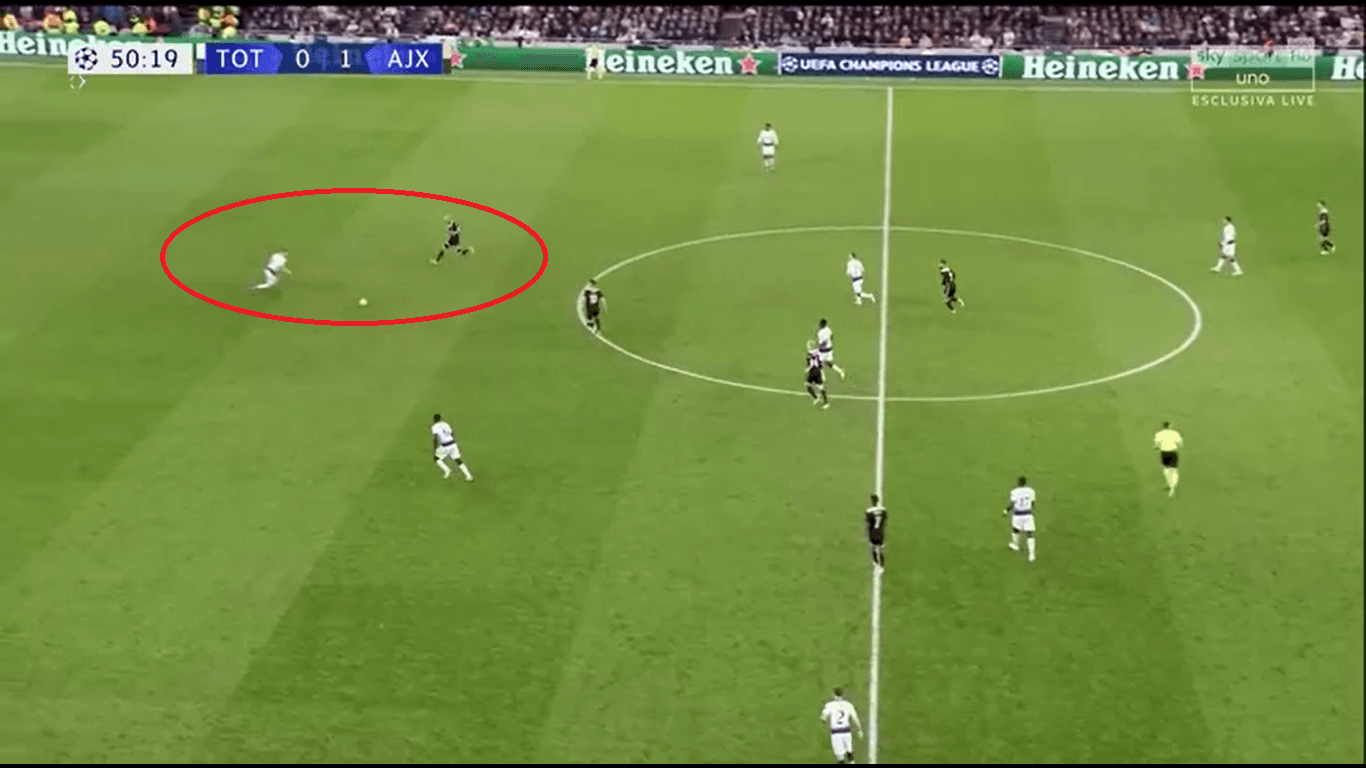
Here, we see a situation where despite having enough passing options, centre-back Davinson Sánchez plays a bad pass to Toby Alderweireld. Ziyech can intercept it and start a counter attack. This shows that despite the tactical improvement in the second half, the individual passing quality of the Tottenham players just was not there on that day.
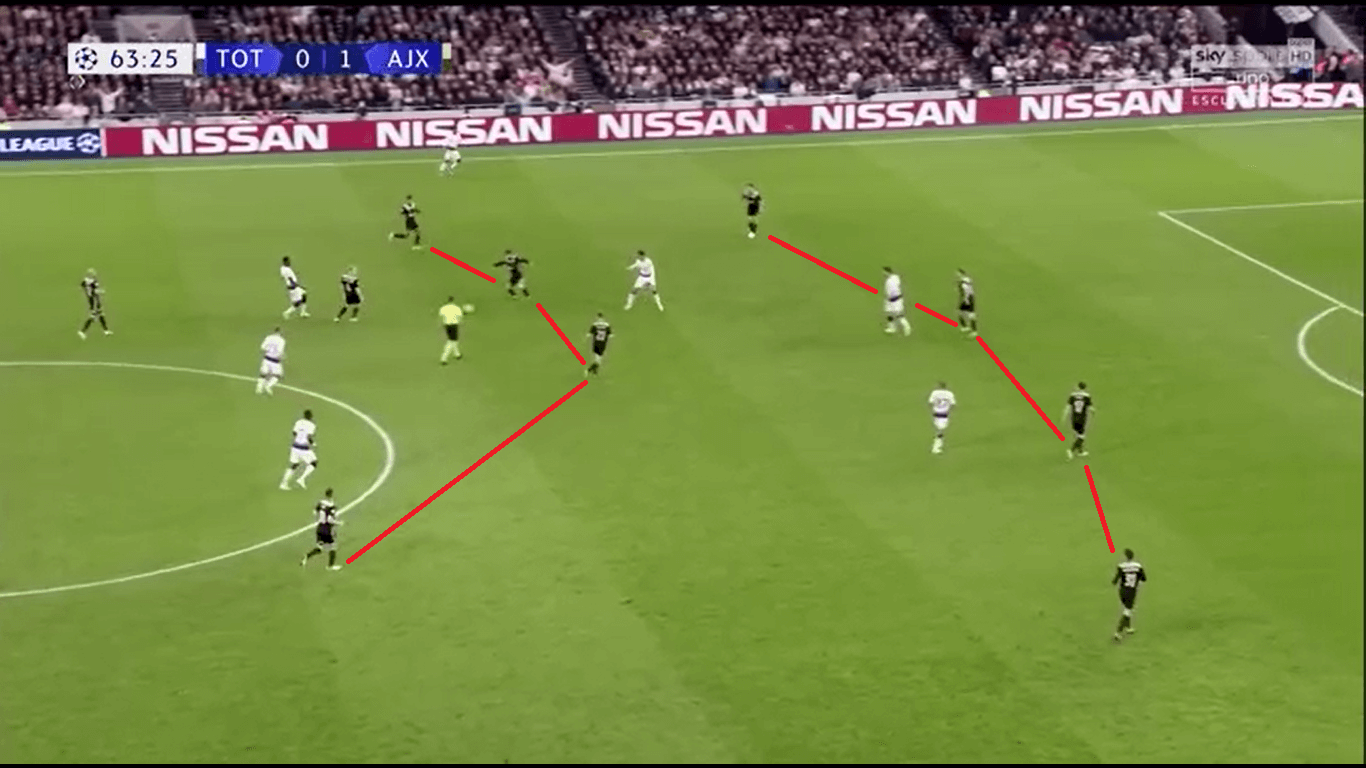
Also, Ajax showed a side that we didn’t know from them. In the second half, they would also fall back and just defend rather passively, like in this situation. They did this also quite well, as they intercept the ball here. Once again the quality of the pass isn’t at the highest level though.
Occasionally, Tottenham also tried to play the ball long to Llorente and hope for a good lay off, like in the image below where he does that for Alli. Alli has then a beautiful position where he is faced with the target. However, Tottenham weren’t able to create something out of these positions.
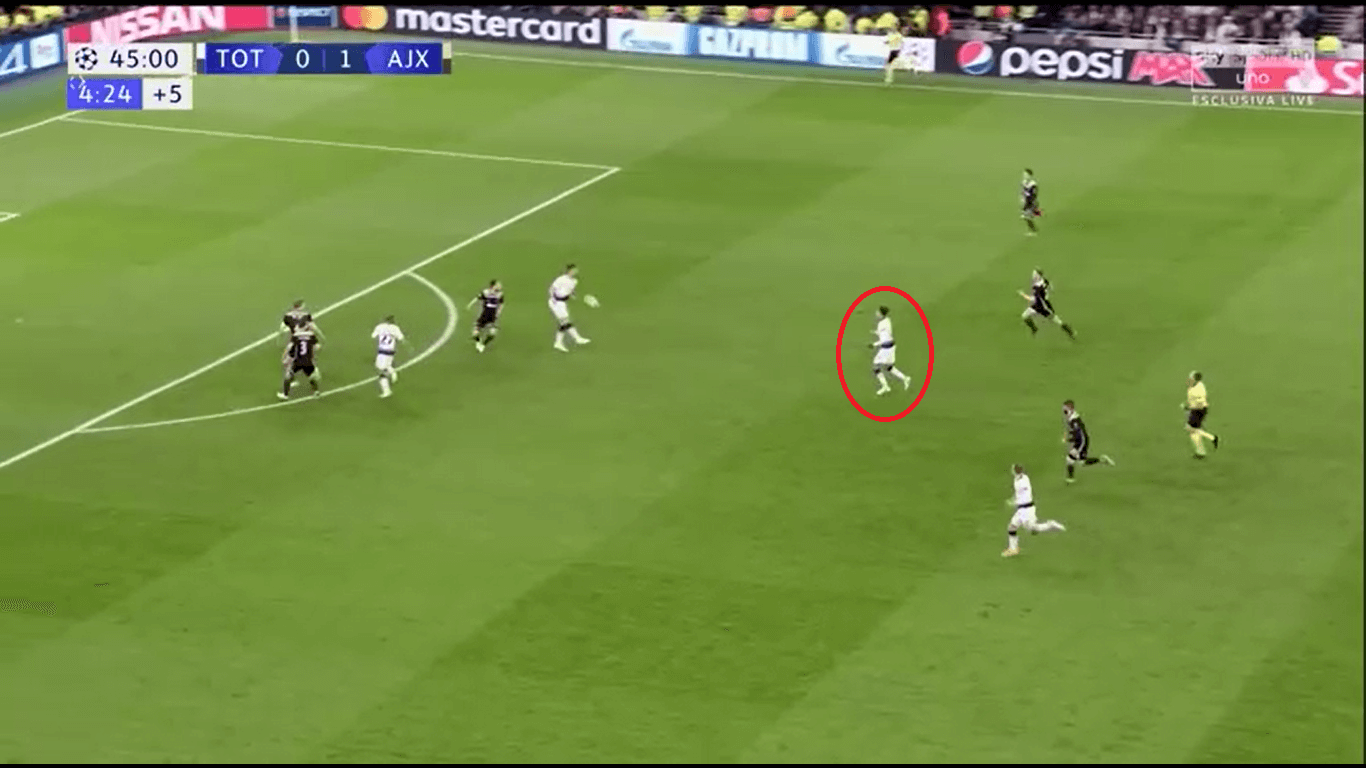
Conclusion
A strong Ajax side deserved the win. Their stable possession game along with their great pressing abilities resulted in a dominant first half. Tottenham, on the other hand, weren’t at their best until the substitution of Vertonghen and the change of the formation. However, even though the second half was much better by Tottenham, they didn’t have what it takes to win a semi-final game of the Uefa Champions League. For the second leg, the hopes will lay on Heung Min Son, who will definitely return. With Son and Kane missing, Tottenham lacked the ability to create danger in the final third. If this changes in the second leg, an interesting game awaits us. Ajax will surely want to avoid that, as they would be happy with a calm win like this one.
If you love tactical analysis, then you’ll love the digital magazines from totalfootballanalysis.com – a guaranteed 100+ pages of pure tactical analysis covering topics from the Premier League, Serie A, La Liga, Bundesliga and many, many more. Buy your copy of the April issue for just ₤4.99 here, or even better sign up for a ₤50 annual membership (12 monthly issues plus the annual review) right here.

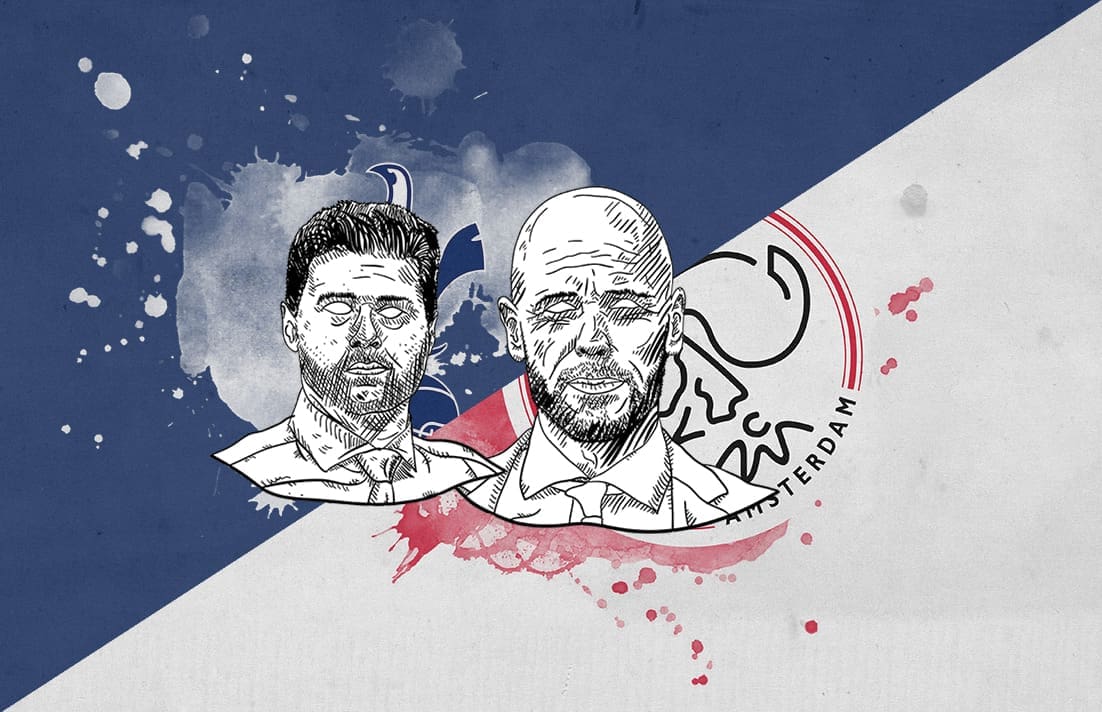



Comments